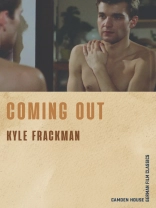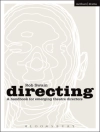<b>Examines the creation, context, and significance of the first and only East German feature film about homosexuality.</b>
It took forty years for East Germany's state-run studios, DEFA, to produce a feature film about homosexuality: <i>Coming Out</i>. The film's story seems radically ordinary today: a young teacher, Philipp, is gay but cannot accept the truth about his sexuality. He starts a relationship with a fellow teacher, Tanja, but falls in love with a man he meets, Matthias, whose confidence in his own self-understanding is alluring for him as well as a challenge. Acclaimed director Heiner Carow created a film that shows the difficulties, both internalized and external, that queer people faced in East Germany. In a quirk of history, <i>Coming Out</i> premiered in German theaters on November 9, 1989, the very night on which the Berlin Wall was opened, which meant the film was initially overshadowed, to say the least, by the earthshaking political events. Yet it remains a popular film and is regularly screened around the world, including prominently at queer film festivals. Kyle Frackman's book examines the film in both the late East German context of its creation and the international context of its reception.
This book is openly available in digital formats under Creative Commons license CC BY-NC.
Spis treści
Acknowledgments
Heiner Carow and Film's Revolutionary Potential
Homosexuality in East Germany
The Distress of Coming Out
Melodrama and Its Excesses
Romance and the Love Story
Philipp and Tanja's Courtship
Queer Exploration
Change and Upheaval
A New Beginning
Coming Out and Reconciling Identities
Acceptance
Release, Reception, and Legacy
Credits
Notes
O autorze
KYLE FRACKMAN is Associate Professor of German & Scandinavian Studies at the University of British Columbia.












